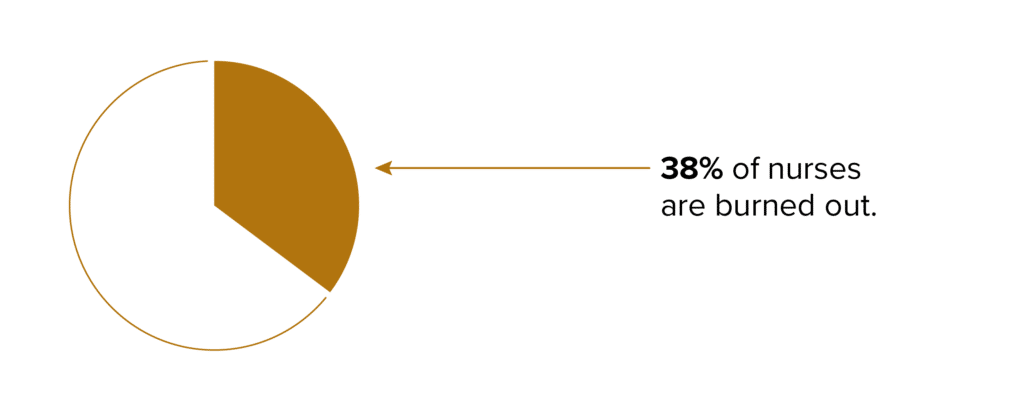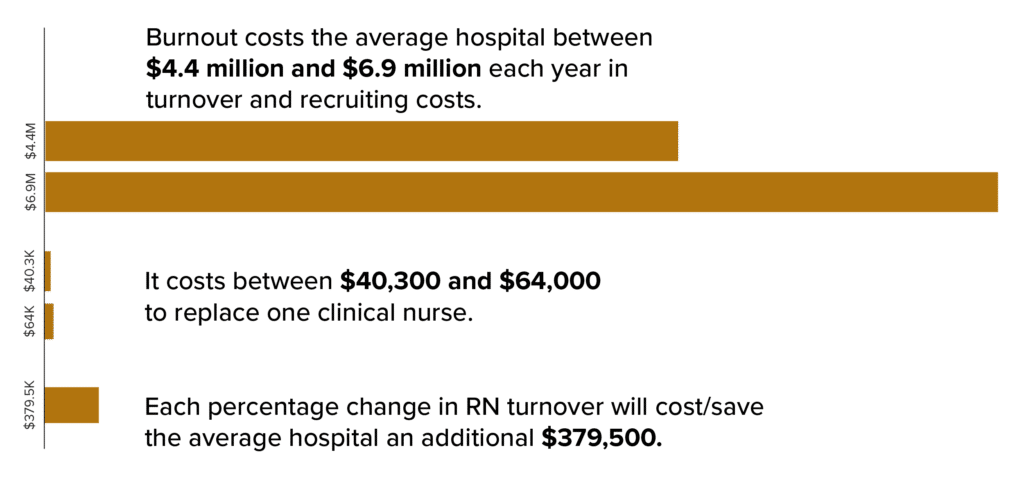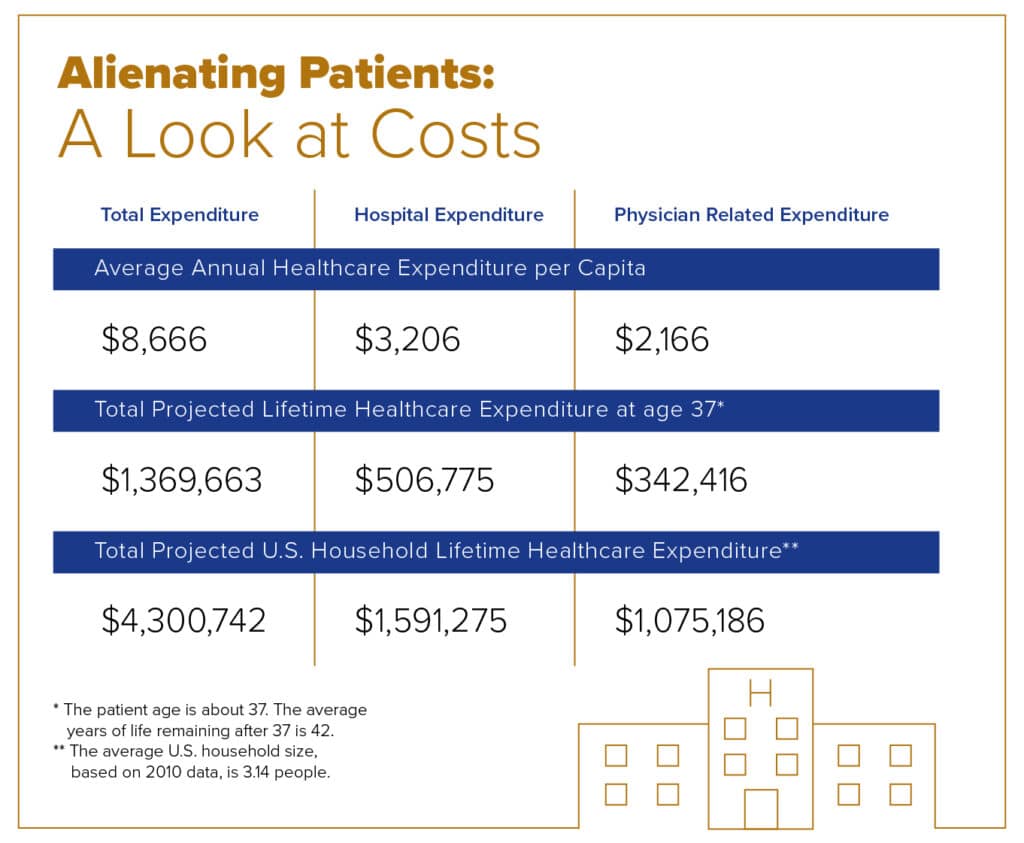
Reducing nurse burnout is a multi-million dollar opportunity for hospitals.
The considerable cost incurred by hospitals due to nurse turnover resulting from burnout, coupled with the subsequent decline in patient care quality, has significant financial implications.
This financial strain hospitals are experiencing is compounded by COVID-19, which has markedly heightened the occurrence of nurse burnout in nearly all healthcare establishments throughout the United States. As a result, prioritizing the mitigation of nurse burnout will assume a pivotal role in the financial recovery efforts of hospitals in the aftermath of the pandemic.
In this article you will gain insight into the considerable hidden costs associated with burnout, along with the potential cost-reduction incentives tied to mitigating this syndrome among your nursing personnel.
What is Nurse Burnout?

Average rate of burnout throughout nursing field. Data from “Nurses’ Widespread Job Dissatisfaction, Burnout, And Frustration With Health Benefits Signal Problems For Patient Care.”
Burnout materializes as a psychological reaction to persistent workplace stress that has not been effectively addressed. It manifests through emotional, mental, and physical exhaustion, depersonalization, and a diminished sense of professional fulfillment
While burnout is a global occurrence affecting various industries, its prevalence is notably pronounced in nursing due to the profession’s demanding emotional and physical requirements. Nurses grappling with burnout often find it challenging to manage; consequently, they might display pessimistic attitudes toward their work, patients, and colleagues.
As a result, the presence of burnt-out nursing staff can permeate an entire hospital, exerting an influence on aspects ranging from clinical outcomes and patient contentment to turnover rates and recruitment expenses.
The Cost of Nurse Burnout for Hospitals
Over the past decade, the labor component of overall hospital expenditures has been on a steady rise, with factors such as a tightening labor market and elevated turnover rates accelerating this trajectory.
Presently, hospitals are allocating substantial resources, exceeding $6.9 million in turnover and recruiting costs annually, towards expenses associated with turnover and recruitment.
The cost of replacing a single clinical nurse falls within the range of $40,300 and $64,000, as indicated by findings from the 2019 National Healthcare Retention & RN Staffing report.
Furthermore, the latest research underscores that even prior to the onset of COVID-19, burnout stood as the primary cause of nurse turnover within hospital settings.
Adding to these challenges is the difficulty hospitals face in retaining both seasoned professionals and newly qualified nurses. Notably, an estimated 17.5% of nurses depart from their initial role within the first year, while an astonishing 33.5% leave within the initial two years.
Nurse Burnout & Patient Satisfaction
Imagine the smiling, quick-witted, highly engaged and empathetic nurse growing increasingly aloof and annoyed with patients. Their empathy fades to frustration, their quick-wit and warm smile traded in for disgruntled silence.
Nurses heavily impact patient satisfaction because they’re on the front line of patient care.
Nurse burnout negatively impacts patient care and engagement, both of which have steep financial consequences. The direst of which is alienating patients.
The loss of one patient costs hospitals an average of $506,755.
Unfortunately, dissatisfied patients often take their families with them. It’s estimated that the loss of lifetime household healthcare expenditure cost hospitals over $1.5 million.
Poor patient engagement leads to poor patient satisfaction scores and increased complaints from patients, families and guests.
Given enough time, these challenges will extend beyond the walls of a hospital and begin to impact its brand and employer reputation.
Early Signs of Nurse Burnout
What’s more alarming than burnout’s impact on hospitals? Its ability to go unnoticed.
Because burnout’s earliest warning signs are subtle, many hospitals fail to identify them. Adding to this challenge is that burnout symptoms — anxiety, depersonalization and feelings of hopelessness, failure and self-doubt — may only become apparent to others once they’ve begun driving highly undesirable workplace behavior.
Nevertheless, catching burnout in its beginning phases is a highly effective way for hospitals to mitigate its most devastating impacts.
One of the best ways to catch burnout before it starts wreaking havoc is by training nurse clinical managers to identify the eight signs of early-stage burnout.
While early detection may pose a challenge for hospitals, the financial rewards make it a solid investment.
Takeaways
- Hospitals have a vested interest in mitigating the devastating impact burnout has on their organizations, patients and nurses’ personal lives.
- Nurse burnout diminishes patient care and engagement, leading to an increase in alienated patients. Just one alienated patient can costs hospitals upwards of $500,000.
- Hospitals that want to reduce nurse burnout will achieve faster results by identifying burnout in its earliest stages.
- Speed is of the essence because nurse burnout is at an all-time high, and the impact this will have on hospitals moving forward cannot be overstated.
Beat Burnout With The Ultimate Work-Life Benefit
Learn more about Best Upon Request’s concierge and errand running services for hospital staff. The program gives busy nurses a resource to offload household responsibilities, personal tasks and errands. 98% percent of users agree this benefit helps reduce stress.


